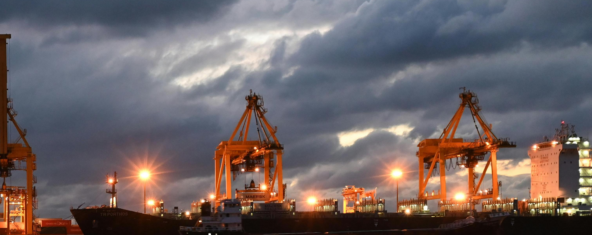Strategies, Tools & Talent for What’s Next! In our final session of the series, we’ll focus on setting your organization – and your career – up for success in the year ahead. We’ll discuss how compliance drives business impact, how…
Global trade logistics is quite literally what keeps international economies running. Behind every successful global shipment is a logistics team that keeps the gears turning, which ensures trade operations run smoothly across borders.
I’ve seen how customs delays, classification errors, and documentation issues can cause major disruptions. The solution is prevention, leveraging a solid logistics and compliance framework. While strategy may guide the big picture, it’s the day-to-day execution at the operational level that keeps supply chains moving and customers satisfied.
Small missteps can create costly disruptions, from classification errors and incomplete documentation to customs holds and duty disputes.
But with the right tools, processes, and partnerships in place, logistics professionals can prevent issues before they start and build systems that support speed, accuracy, and compliance.
This guide is designed to help you strengthen that foundation. Inside, you’ll find actionable considerations that can:
- Streamline customs clearance and avoid delays
- Improve documentation accuracy to reduce risk
- Minimize tariff-related disruptions and shape mitigation plans
- Align logistics execution with overall compliance goals
Whether you oversee port operations, manage freight partners, or support global trade from the warehouse floor, this resource will help you deliver smoother, smarter, and more secure cross-border operations.
1. Tariff Planning & Supply Chain Strategy
Adapting to global trade shifts calls for strategic coordination between logistics, sourcing, and compliance teams. As tariff structures evolve and geopolitical tensions shift supply chain dynamics, logistics professionals are increasingly on the front lines of business resilience.

For example, many organizations are navigating the impact of new, universal import tariffs. Some of our clients have:
- Diversified sourcing across lower-duty jurisdictions
- Rerouted goods through Foreign Trade Zones (FTZs) or bonded warehouses
- Renegotiated supplier contracts to share tariff-related costs.
Building a flexible supply chain is no longer optional, but essential. That means investing in visibility tools that track goods and duties in real time, maintaining a diverse network of sourcing partners, and using scenario modeling to test the impact of different tariff outcomes before they hit your bottom line. When navigating geopolitical shifts and trade, it’s wise to observe how other companies are using diversification to future-proof their operations.
Glossary at a Glance
What is a Foreign Trade Zone?
Foreign-Trade Zones (FTZ) are secure areas under U.S. Customs and Border Protection (CBP) supervision that are generally considered outside CBP territory upon activation. Located in or near CBP ports of entry, they are the United States' version of what are known internationally as free-trade zones.
Strong collaboration between global trade logistics and compliance teams is also key. It’s vital to regularly review tariff changes together, share supplier and shipment data for real-time compliance checks, and align performance goals; teams can anticipate disruptions before they happen and respond quickly when they do.
Logistics professionals who take the time to embed tariff planning into their day-to-day decision-making are better positioned to:
- Reduce unexpected duty costs
- Keep shipments flowing during policy shifts
- Strengthen supplier relationships
- Support broader business agility
Moving goods is only part of the job—success lies in moving them efficiently, compliantly, and confidently through a global landscape that never stops evolving. The entire operation becomes stronger when logistics is tightly aligned with trade strategy.
2. Documentation & Execution Challenges
At the heart of this success is document accuracy. Customs documentation is your first line of defense against costly shipment delays, border holds, and fines. Mistakes or mismatches on commercial invoices, HS codes, or origin declarations can disrupt entire supply chains. That’s why high-performing logistics teams treat documentation as a strategic priority, not a post-shipment task.

These are some of the most common documentation pitfalls I’ve seen from clients:
- Incorrect HS codes, often due to outdated classifications or misinterpretation of tariff rules. Addressing this starts with consistent staff training and partnering with experienced trade professionals.
- Missing or incomplete commercial invoices, which can trigger automatic shipment holds. Automating document generation directly from ERP or TMS platforms helps ensure every field is complete and consistent.
- Inaccurate country-of-origin declarations, which may result in penalties or denied trade preferences. Use detailed checklists, supplier certifications, and pre-clearance audits to confirm accuracy up front.
Strong collaboration between logistics leads and customs brokers can further reduce risk. Many top-performing teams hold daily status updates, share access to key compliance documents, and conduct joint post-entry audits to catch issues before they become liabilities.
Looking to improve your clearance times and minimize disruptions? The most impactful improvements often come from:
- Implementing electronic document management systems to eliminate manual errors and streamline handoffs.
- Integrating customs data with your ERP or logistics software, ensuring real-time visibility and faster broker coordination.
Compliance Challenges Become Operational Gains. See How.
For a real-world example of how better documentation and smarter execution can transform operations, take a look at how we helped an automotive supplier.
By focusing on these areas, logistics professionals don’t just solve problems—they build the kind of resilient, proactive trade infrastructure that supports long-term business agility and success.
3. Logistics-Driven Compliance Efficiency
When logistics and compliance teams work in sync, the results create measurable business impact. By integrating compliance protocols into everyday logistics processes, organizations can:
- Reduce delays
- Avoid penalties
- Drive significant cost savings across the supply chain

For logistics teams, the operational benefits of strong compliance integration are easy to quantify: faster customs clearance times, fewer shipment holds, and higher on-time delivery rates. These all point to a supply chain that’s both agile and audit-ready. The key lies in aligning KPIs across departments so that both teams work toward shared goals.
That means updating logistics scorecards to include compliance-related metrics, like incident rates, audit outcomes, and cost savings from duty optimization or reduced delays. Tracking these alongside traditional delivery metrics helps leadership clearly see the connection between regulatory diligence and operational excellence.
Consider this: One global retailer's solution was embedding compliance checkpoints directly into the shipment booking process. This seemingly small change resulted in a 30% reduction in customs holds, over $250,000 in avoided penalties, and greater reliability across its supply chain. By making compliance part of the logistics DNA, the company created a more resilient and profitable operation, proof that frontline teams can drive top-line results.
Optimize the Front Lines of Global Trade Logistics for Your Business
The front line of global trade logistics is no place for guesswork. Today’s logistics professionals need tools, insights, and cross-functional alignment to keep shipments moving and risks under control.
If you're ready to streamline your customs execution and take greater control of your trade operations, contact Star USA to optimize your logistics process.
Let logistics be more than movement—let it be your competitive edge. When you're ready to put a plan into action, reach out to my team for support.

Nic Arters, Director
Nic specializes in Supply Chain Security and Import/Export Compliance. He transforms regulatory requirements into strategic business opportunities, helping businesses unlock new market opportunities, mitigate risks, and enhance brand reputation.



